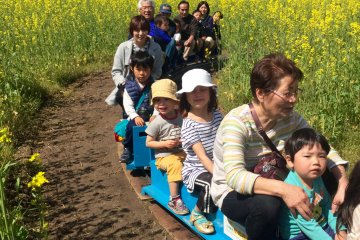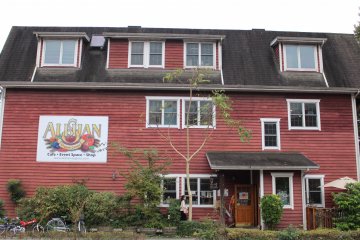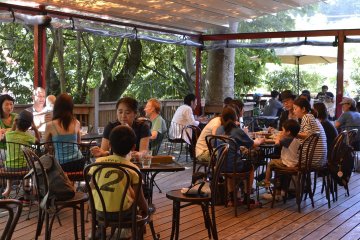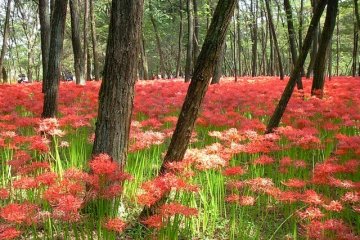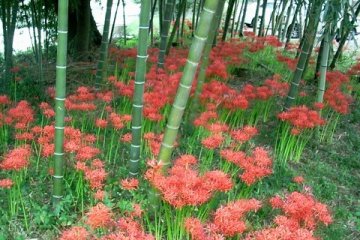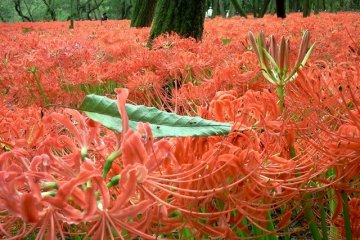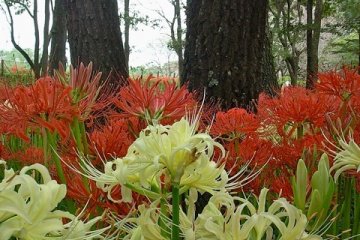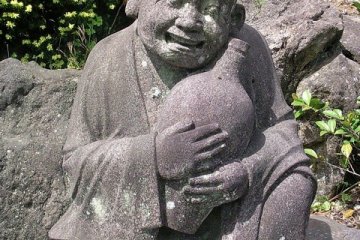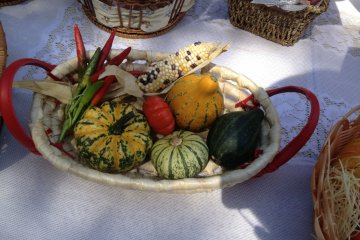For fifty weeks of the year, the town of Koma (one stop past Hanno on the Seibu Ikebukuro line; 50 km from Ikebukuro, Tokyo) could be just about anywhere in rural Japan: peaceful, relaxing and a good hiking area. But at the end of September and early October the area bursts into color when 500,000 special flowers come into bloom. Called higanbana and manjushage in Japanese or cluster amaryllis, and, my preference, red spider lilies in English, the area's fields are transformed into a surreal atmosphere.
In Tokyo red spider lilies can be seen here and there singly or in small clusters and might not be overly impressive. However, expenses of tens of thousands of them are something to behold. The dazzling red flowers look like miniature fireworks explosions.
Every year, depending on the weather, Koma has a manjushage festival, usually starting around Sept 20, lasting for about 2 to 3 weeks. The Seibu Ikebukuro line's Red Arrow is an express train that normally zooms past Koma on its way to Chichibu. But during the festival, it makes a special stop. (around ¥1000; it leaves on the half hour and takes 47 minutes. Of course, there are slower, less expensive trains).
From the station, it is easy to find the path down to the river and the flowered fantasy land. Along the way, local farmers sell their fresh produce. There is a modest admission fee of ¥300 and then you are free to roam freely. Most of the spider lilies are along the Koma River and this is a nice place for a picnic. The river is shallow and youngsters of all ages enjoy skipping stones. There are many kingfishers in the area.
An area is set aside for food stalls, drinks, T-shirts and various other items. I always have lunch at Alishan, a mellow vegetarian restaurant—and there aren't many in the area. It is very pleasant to sit on the patio nearby the river. Then, it is difficult to leave the small Tengu Natural Food store without buying some granola bars and organic pumpkin seeds as snacks for the adventures that lay ahead in the day.
There are many things to see and do in Koma; there are bridges to cross, temples to visit, and trails to explore. It is unlikely that your first visit to this area will be your last. However, to see Koma at it's best you should act soon.




